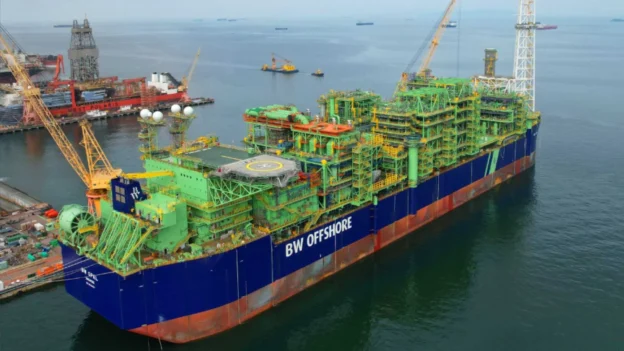Santos has confirmed the start of gas production at the Barossa project, following the successful receipt of the first flow at the BW Opal floating production, storage and offloading(FPSO) unit. This project promotes productive operations, consolidating the company’s strategic advance in the supply of liquefied natural gas(LNG) to the Asia-Pacific region.
Gas production at Barossa
BW Opal start-up occurred on Sept. 16, followed by the start of flow from the subsea wells. Santos, together with its partners PRISM Energy Australia and JERA Australia, celebrates this achievement as part of a rigorous technical execution that positions the Barossa project as one of the most significant in the Australian energy industry.
The six wells drilled in the Barossa field have demonstrated exceptional reservoir quality. Moreover, five of them have been tested, exceeding previous estimates of flow capacity, with an expected average production of approximately 300 million standard cubic feet per day.
The FPSO BW Opal, located 285 kilometers off the coast of Darwin, is one of the largest and most technically advanced of its kind. With a 358-meter hull, 140-person capacity, and a gas handling capacity of 850 million standard cubic feet per day, it integrates a combined cycle power generation system that reduces non-reservoir emissions by more than 50%, equivalent to more than 0.75 million tons of CO₂e per year.
In addition, the Northern Territory Environmental Protection Authority has renewed the Environmental Protection License for the Darwin LNG plant, allowing it to move forward with commissioning. This facility will be fueled by gas produced at Barossa for the next two decades.
The first entry of gas into the FPSO is an important step for the project and a recognition of the efforts of our team and the support of our partners.
We are on track to deliver reliable energy to our customers and long-term value to our shareholders through Barossa LNG.
Kevin Gallagher, Managing Director and CEO of Santos.
With the BW Opal RFSU, Santos will recognize a lease liability of approximately US$665 million and a right-of-use asset value of approximately US$1.4 billion. This is estimated to increase operating leverage by approximately 2.4 percentage points.
Source and photo: Santos

